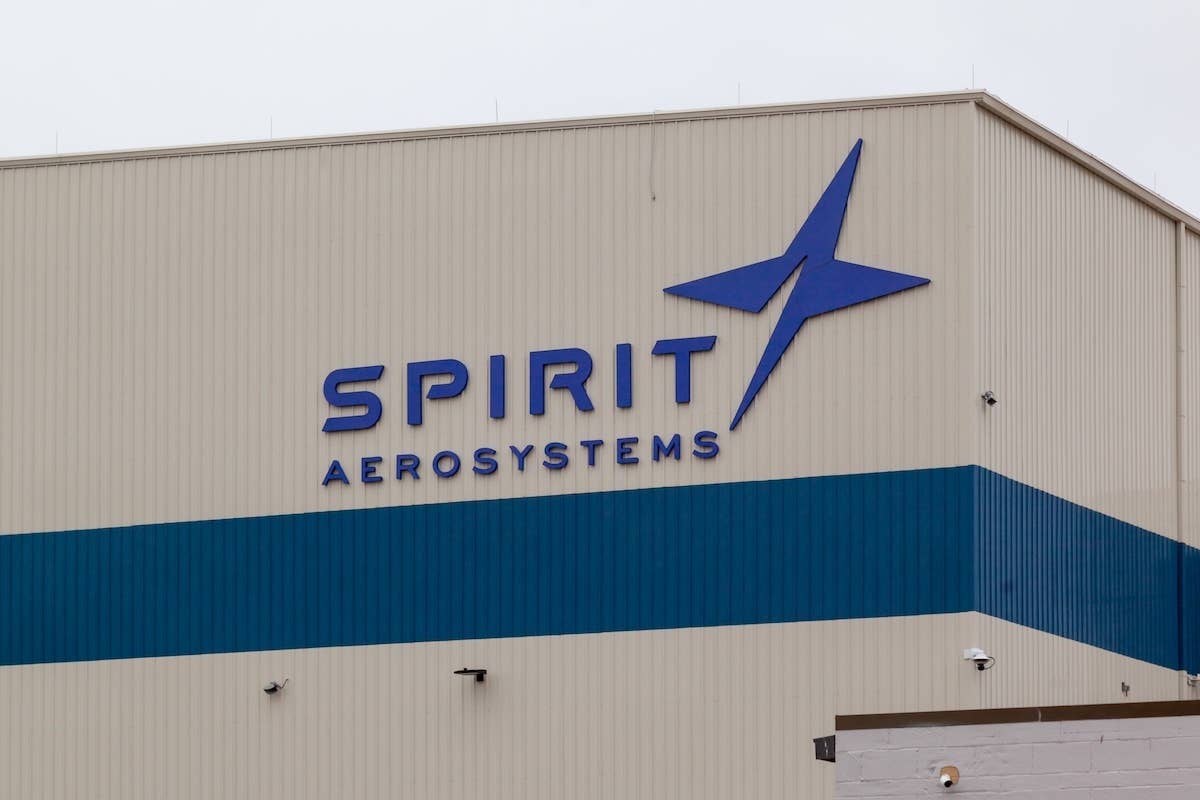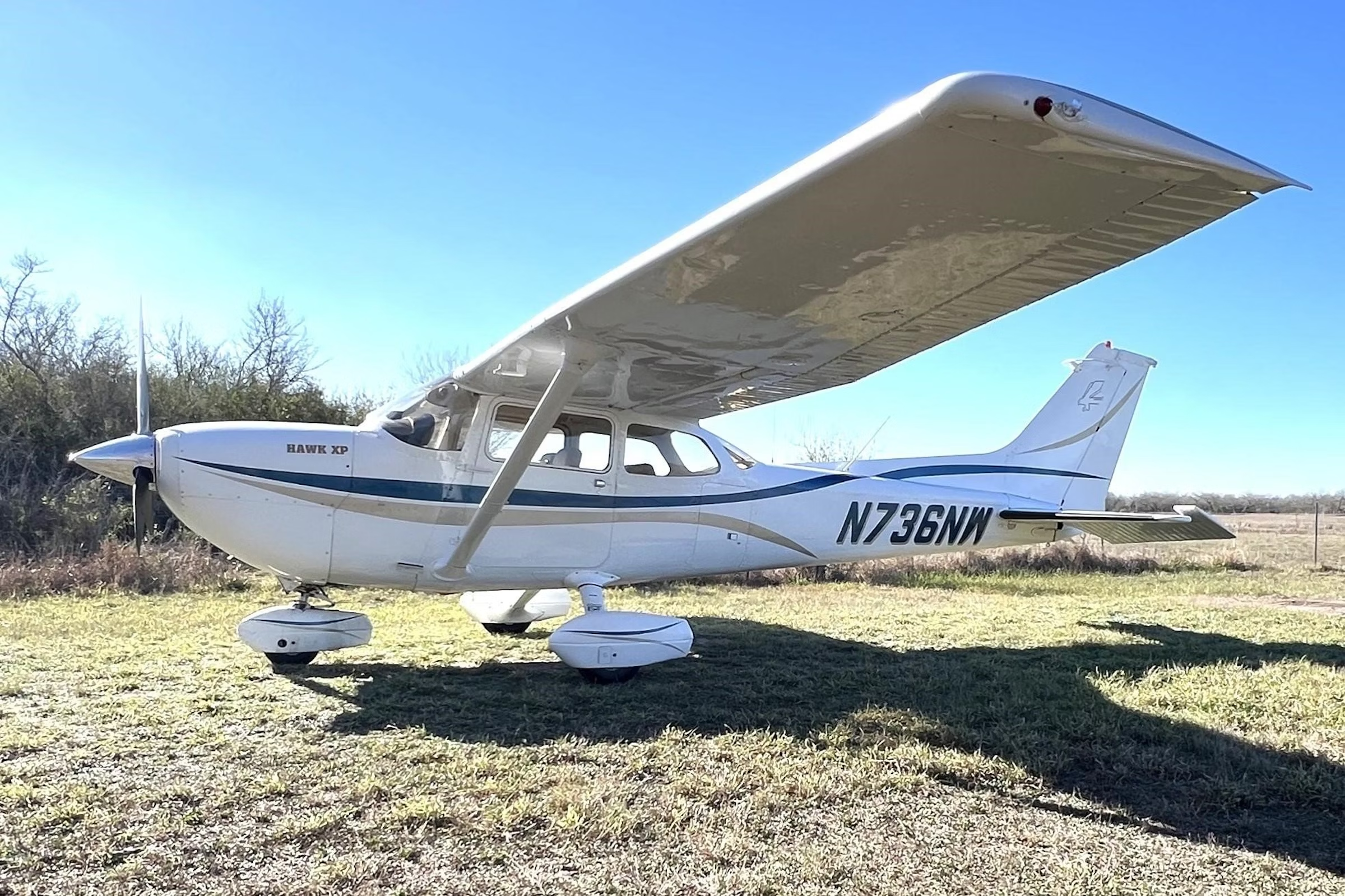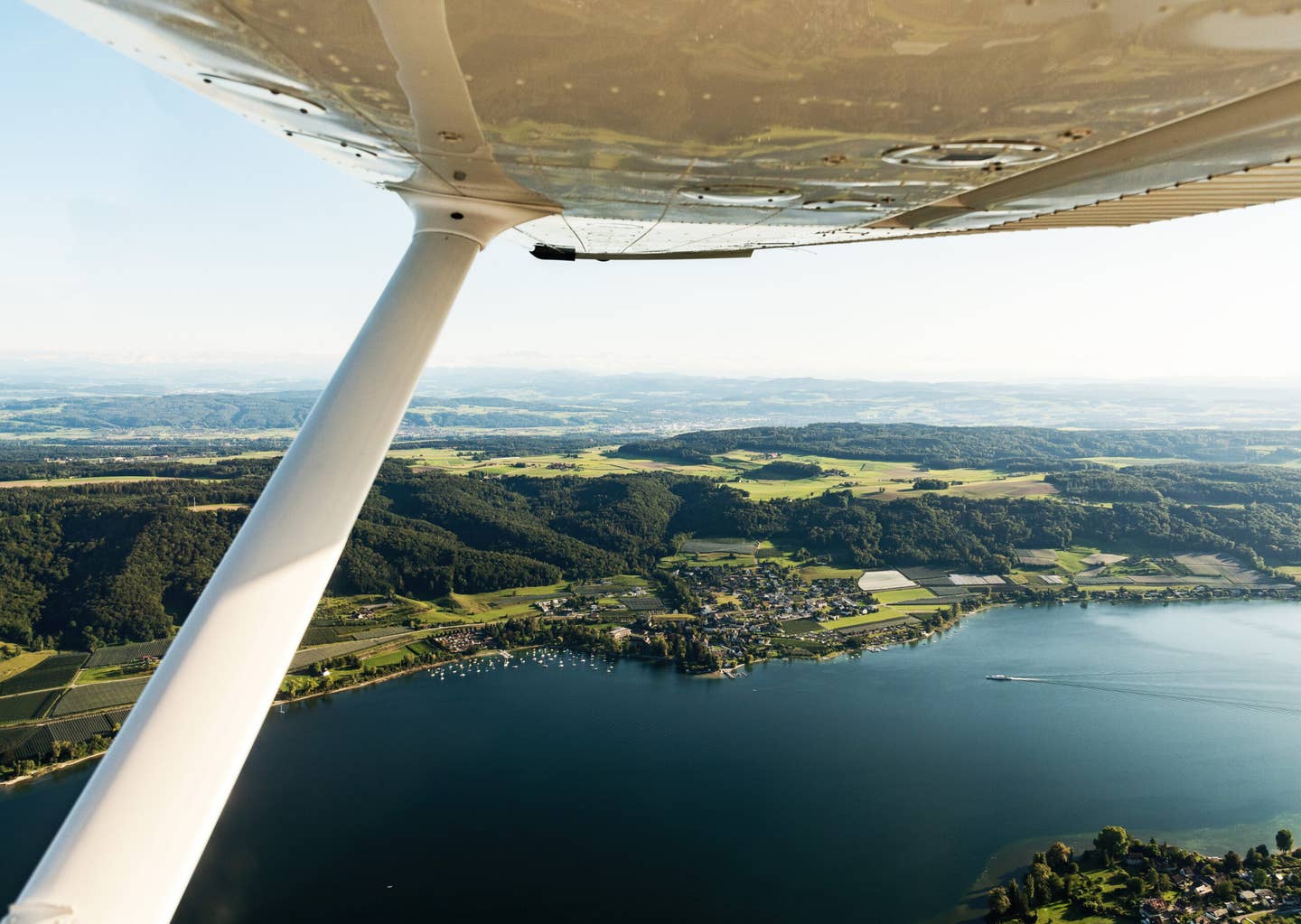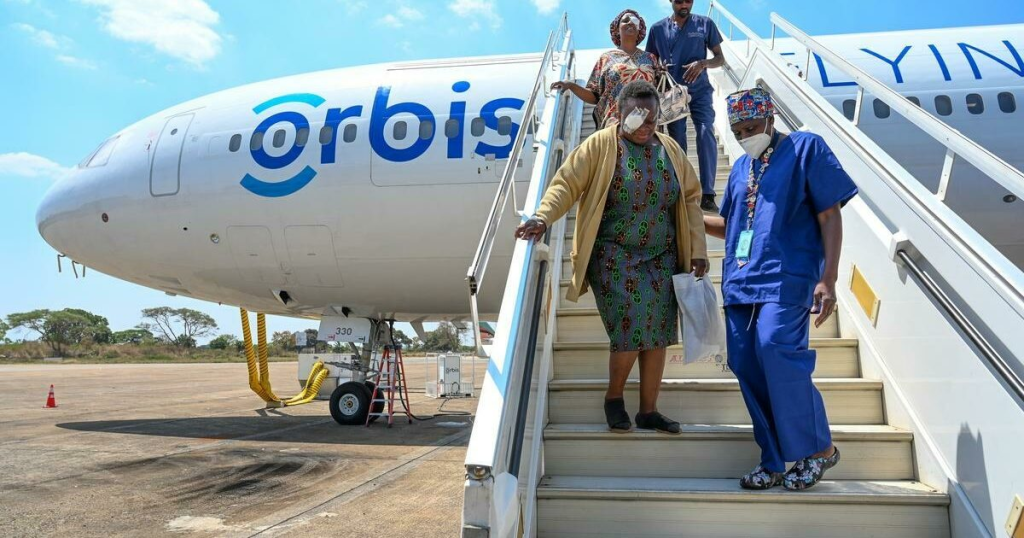
On April 3 there was a short e-mail from Dick Rutan to “All.” It said:
Just a note ... had a going away lunch at the Voyager Cafe Mojave with Burt and Tonya; after lunch they got in the car and are driving to the new home in Idaho as I write. So they are gone lock stock and barrel from Mojave.
Gone! I found this message unexpectedly moving. Mojave without Burt Rutan! His presence had permeated the place for the past 36 years. His driving away — it was a homely detail that he and his wife left in a mere car, not a fiery chariot or even an asymmetrical twin-engine airplane — was like the soul leaving a body, though he had merely gone to Idaho, not to Heaven.
When I first got to know him in 1974, he and his second wife, Carolyn, were installing the Rutan Aircraft Factory — “Proud Birds For Your Pleasure,” their business card said — in a vacant barrack at the desolate and windswept Mojave airport. He was 31. His professional career so far had consisted of seven years as a flight test engineer at Edwards Air Force Base, followed by two at Bede Aircraft in Newton, Kansas, where he had succeeded in rescuing the BD-5 from instability if not from insolvency. He had designed, built and sold plans for an unusual-looking airplane, the VariViggen, whose stall-proof canard aerodynamics he had investigated using a large radio-controlled model mounted on a gimbal atop a moving car.
In his Mojave shop, Rutan had a fuselage shell for a BD-5, a metal canard and a plan to combine them into an airplane with BD-5 performance, but with a reliable engine and with two seats rather than one. Soon he discarded the metal components, switched to composites and dreamed up a name for the as yet unbuilt airplane: VariEze.
The original VariEze was a minimalist design with a Volkswagen engine and no electrical system. Canard elevons attached directly to the side-stick by a pair of short rods controlled both pitch and roll — the latter rather marginally, as it turned out. The first flight was scary. I watched it beside the runway with Carolyn, worrying, ever the wordsmith, about what I would say to her if Burt got killed; but the airplane worked. Rutan quickly learned to use the outward-only rudders to help with banking — swept-wing airplanes lend themselves to steering with the rudder — but other pilots who flew the VariEze prototype complained about the lack of roll authority in the stick, and at last he reluctantly added midspan ailerons to the wing.
The VariEze prototype was a sensation at Oshkosh in 1975, and Rutan responded with a version for homebuilders. A Continental engine took the place of the VW. The arresting appearance — particularly the slender, highly swept wing — remained, as did the high speed, the long range and the characteristic inability to stall. The so-called “moldless composite” construction technique was novel, as was the presentation of the plans: a large-format, spiral-bound book of hundreds of pages mingling typed text, cartoons, drawings, photographs and hand-printed commentary.
Rutan’s creative energy was inexhaustible, and the next five years brought a series of new prototypes. All were canard or tandem-wing designs, but they had little else in common. They included the Quickie, a tiny, super-simple single-seater designed around an inexpensive 18 hp industrial engine; the Grizzly, an ungainly looking three-surface bush plane whose main purpose in life was to investigate the use of high-lift flaps with tandem wings; the Solitaire, a self-launching sailplane with a retractable engine between the cockpit and the canard; the Long-EZ, a completely redesigned, larger variation upon the VariEze; and the twin-engine Defiant.
Of these the Defiant seems to me to have been the most important. A four-seat canard with 150 hp Lycoming engines on the nose and tail, fixed landing gear and fixed-pitch propellers, it was a twin in which the only pilot action required in case of an engine failure was to push both throttles forward. Eliminating risks from both stalls and engine failures, it significantly shortened the list of aviation’s potentially fatal dangers.
Howard “Pug” Piper, who had left his position as engineering vice president of his father’s company after it was acquired by the conglomerate Bangor Punta in 1969, became interested in developing the Defiant as a commercial venture. But he and Rutan disagreed on the basic point of the design. Piper wanted larger engines, constant-speed props and retractable gear. Rutan would have accepted larger engines, but he opposed the other modifications because they violated, in one way or another, his “no pilot action” philosophy. Piper, with many years of experience in the airplane business, probably thought that more customers would be attracted by sophistication and speed than by mere safety — and incidentally that profits were larger on more complex airplanes. In the end, nothing came of their discussions.
If the Defiant was the most “serious” product of the RAF years, the comparatively trivial Quickie turned out, unexpectedly, to have more lasting consequences for Rutan’s fame and reputation. Rutan designed the Quickie for and with Tom Jewett, who had also worked at Bede Aircraft. The relative contributions of the two designers later became a matter of dispute and one cause of growing resentment between them.
Years earlier, Jim Bede had announced that he would make an unrefueled round-the-world flight in a modified Schweizer 2-32 sailplane. The flight had never taken place, and in Rutan’s opinion — easily confirmed by some simple calculations — Bede’s airplane could not have done it anyway. But the challenge fired the imagination of Jewett, who designed a plane called “Big Bird” for the same goal. Even Big Bird was only marginally suitable — it would have required an average tailwind of 50 knots — but Rutan’s brother Dick, retired from his job as an Air Force fighter pilot and itching for a new project, pressed Burt to come up with a competing design. He did.
Big Bird, a sleek yellow airplane with a 15-meter sailplane’s wing, tip tanks and a jettisonable undercarriage, broke up and crashed during a test flight in 1982, killing Jewett; but it is unlikely that without it, and the prickly competitiveness simmering between the Rutans and Jewett, the legendary Voyager would ever have come into existence.
Voyager was a remarkable design with an unprecedented ratio of fuel capacity to structural weight. Unlike Bede’s and Jewett’s airplanes, it could circle the globe in still air. Nightly television coverage of its nine-day flight at the end of 1986 made Rutan’s name familiar to people who had no special interest in aeronautics. It began to appear that there was nothing that this prodigy could not do.
The next, and most important, turning point in his career came, again, indirectly. Rutan had provided structural design and flight testing services to a New York firm, Ames Industries, on two projects: the NASA-sponsored oblique-wing AD-1 and the 62 percent scale Fairchild NGT proposal for an Air Force jet trainer to replace the Cessna T-37. Both were proof-of-concept (POC) demonstrators, built quickly using the moldless foam-and-fiberglass techniques Rutan had pioneered on the VariEze, and scaled down to fit an available jet engine, the 220-pound-thrust Microturbo TRS 18. For the cost of a typical wind-tunnel program, they provided the same or better data and, in addition, the irresistible opportunity for the customer to actually experience the proposed airplane in flight.
In 1982 Rutan, alert to the business potential in the rapid prototyping of new designs, secured financing to set up Scaled Composites. Its original logo was a hand resting upon the curved upper surface of an airfoil. Below it was the self-referential anagram "Scaled Composites: Advanced Link to Efficient Design."
Scaled’s only significant asset was Rutan himself, with his conversation-dominating self-assurance, his ingenuity and his mastery of both aeronautical engineering and practical composite construction. The first big contract came from Beech Aircraft, which was intent on developing a King Air replacement. Differing versions exist of the genesis of the Starship’s design. Some say that Beech originated it and hired Scaled to build the POC. But a source close to the project has told me that Beech management invited Rutan to propose several configurations, and in the ensuing “beauty contest” chose the VariEze look-alike. Curiously, one of the discarded proposals was for a three-surface airplane similar to the Piaggio Avanti, to which the Starship would later suffer much unfavorable comparison.
In 1985, Beech acquired Scaled, and Rutan became a Beech vice president — a rather unexpected turn of events for a dyed-in-the-wool iconoclast and outsider. Rutan turned Scaled’s attention to a new prototype for Beech. Its official name was “Triumph,” but in the Mojave shop it was called “Tuna,” because the initials of the original project description, “Cabin Twin,” were shared by a local disc jockey, Charlie Tuna. Tuna was an 8,500-pound, six- to eight-seat jet of three-surface configuration. Its two FJ44s were mounted, in order to provide structural commonality with projected piston and turboprop versions, directly atop the wings.
Beech eventually canceled the entire Cabin Twin project, sold Scaled back to Rutan in 1988, and went on to make the venerable King Air the most successful turboprop ever. Thereafter, ownership of Scaled took several twists and turns; today it is controlled by Northrop Grumman. While deep-pocketed Beech owned Scaled, however, the Rutan Aircraft Factory ceased selling plans because of concern about possible liability claims arising from the inevitable mishaps of amateur builders. RAF continued to provide support to builders for many years, only recently subsiding into wraithlike insubstantiality.
Neither space nor human endurance permits a full enumeration of projects that Scaled undertook and Rutan, to one degree or another, guided. He left no form of transportation untouched, and in his spare time designed his own energy-efficient semisubterranean house. A couple of the more interesting early airplanes were the tandem-wing “Special Mission Utility Transport” (or “SMUT”), aerodynamically similar to the Grizzly, which was designed for DARPA, but never used, for hostage rescues in Middle Eastern deserts; and the Pond Racer, intended to replace the steadily eroding supply of World War II fighters that race at Reno.
When I once asked him about his fondness for canards, Rutan replied — I had a feeling that this was a bit of a set speech — that he had no prejudice in their favor, but merely selected whatever configuration was best suited for each new project. Nevertheless, almost all of his early designs were canards or tandem-wing airplanes; it was not for nothing that he came to be known as “canard guru Burt Rutan.” He set off a canard craze among designers; for a decade, there was a good chance that any new design or proposal would use the configuration. By the late 1980s, however, Rutan was producing more and more conventional or three-surface designs — and three-surface configurations are really not canards, the fore surface being part of the wing while the horizontal stabilizer is the principal source of both pitch control and longitudinal stability. He had also drifted away from pushers, complaining that he had never found a way to eliminate the harsh noise produced when propellers chop through the disturbed wakes of wings and fuselages.
Scaled employees grew from a handful to hundreds. Increasingly, projects were assigned to lead engineers, with Rutan supervising. Global Flyer, for example, the single-engine jet in which the late Steve Fossett, flying solo, first duplicated and then surpassed Voyager’s achievements, was designed and built with little of Rutan’s direct participation. But certain designs, entirely his own, represented the continuing evolution of his ideas about personal aircraft. One of these, Catbird, originally intended as a CAFE efficiency racer and also studied as a Bonanza replacement, was a very compact five-seat three-surface machine that achieved a 215-knot cruising speed with a turbocharged 200 hp Lycoming engine. It succeeded the Defiant as Rutan’s personal airplane until he cannibalized its engine for his next personal-airplane project, Boomerang.
Catbird was a relatively conventional airplane; the wildly asymmetrical Boomerang was not. Rutan had always left himself open to the charge that he designed weird-looking airplanes just to get attention, but never more than with Boomerang, in which nothing mirrored anything else and you would need a tape measure to locate the centerline. But Boomerang was a prodigious performer, and proved, if it still needed proving, that there was a great deal of method in Rutan’s madness.
The 1990s brought two VLJ prototypes — the Visionaire Vantage and the Williams V-Jet — and the spidery Proteus. Originally designed as a high-altitude, long-endurance telecommunications relay platform, Proteus, with a service ceiling above 60,000 feet, has been in continuous use since 1998 in a wide variety of research and systems testing roles. Configured to carry external payloads on a central pylon, Proteus was the precursor of the larger motherships used to air-launch SpaceShipOne and its commercial successor, SpaceShipTwo.
Since I got to know him in 1974, some things about Rutan didn’t change; his Elvis-impersonator sideburns, for instance (though even they did experience occasional periods of shrinkage). He always had a lively sense of humor, and when I visualize his face I most often see it broadening into a laugh across a table at a Mojave cafe. But he changed in other ways. Never a small ego, he mellowed over the years — I thought his fourth wife, Tonya, got some credit for this, though Time too played its usual part — and grew increasingly willing, sometimes even eager, to admit errors and share credit for successes.
He became less and less interested in private flying, particularly after a near-death experience in Boomerang (no fault of the airplane) and after losing his medical to cardiac problems. He became a committed golfer and, in an evolutionary development that I have seen in a few other people as well, he began to denigrate his old love, saying that he took more pleasure in honing his golf swing than flying his airplanes. When atmospheric flight ceased to excite him, space flight took its place, and he famously made his mark on it. SpaceShipOne, he said, gave him the most satisfaction of all of his creations. Nevertheless, his last design was a hybrid-electric light airplane whose first flight took place just before his retirement.
After winning the Ansari X-Prize with SpaceShipOne in 2004, he spent less and less time at Scaled, and in April 2011, a couple of months before his 68th birthday, he was succeeded as CEO by Doug Shane, who had been with the company since joining it, just out of college and literally fresh-faced, at its inception in 1982.
Rutan has sometimes been criticized for claiming as his own certain ideas — for example, the loaded canard or the dethermalizer-like re-entry system of his suborbital spaceplanes — that others had had before him. Actually, it has more often been the case that writers, including me, have, through historical ignorance or a desire to magnify their subject, attributed to him inventions that he never actually said were his. But which of his creations was entirely new, which invented anew, and which was ingeniously adapted and transformed from some historical precedent is really not important. He did things no one else thought of doing or believed possible, and in ways that no one else had tried. He had a knack for succeeding where others failed. The sheer variety of his creations was unprecedented. Some designers return again and again to certain trademark formulas; Rutan seemed always to start afresh. Ambition, energy, showmanship and ability converged in him to produce a career, and a man, such as we are not likely to see soon again.
And check out our additional retrospective Rutan photo gallery, taken from the archives of Flying.

Sign-up for newsletters & special offers!
Get the latest FLYING stories & special offers delivered directly to your inbox






